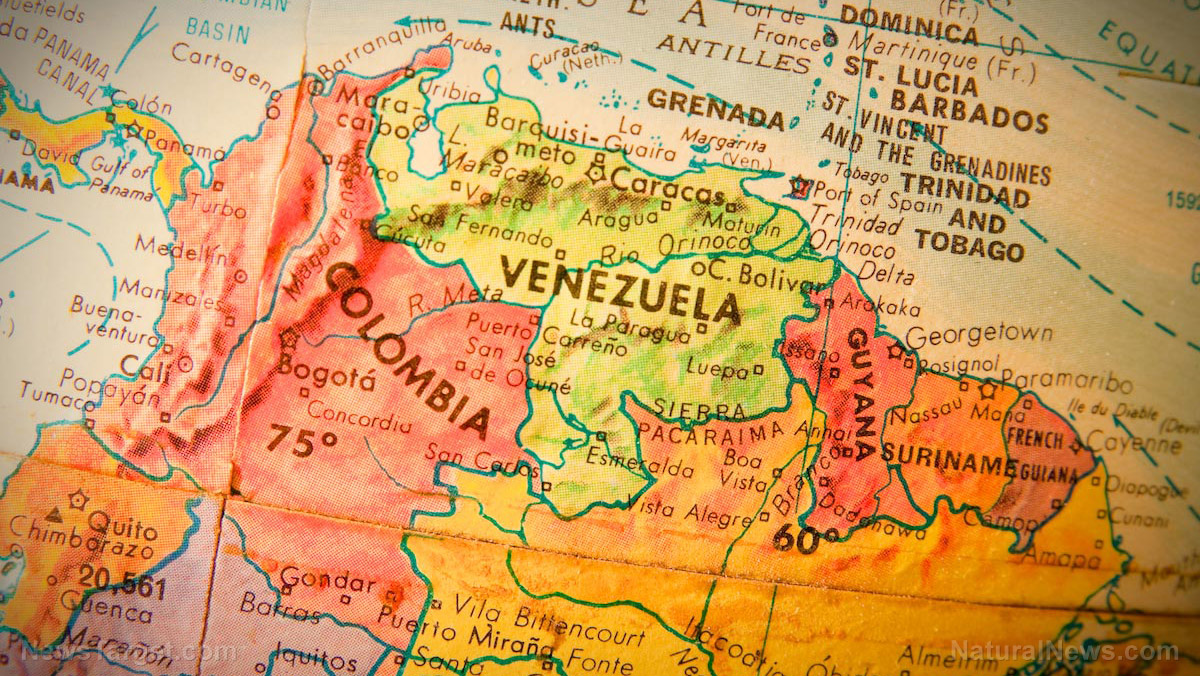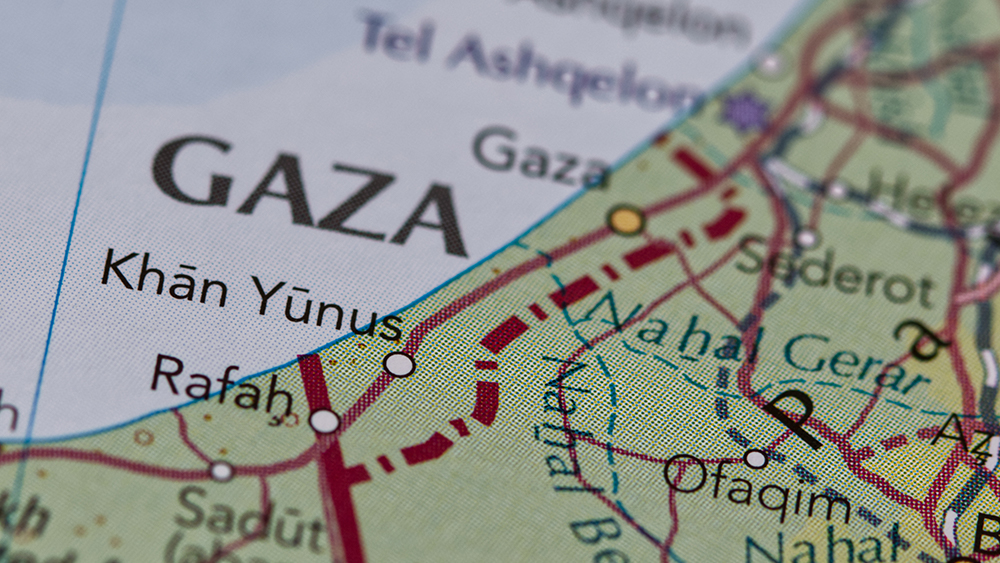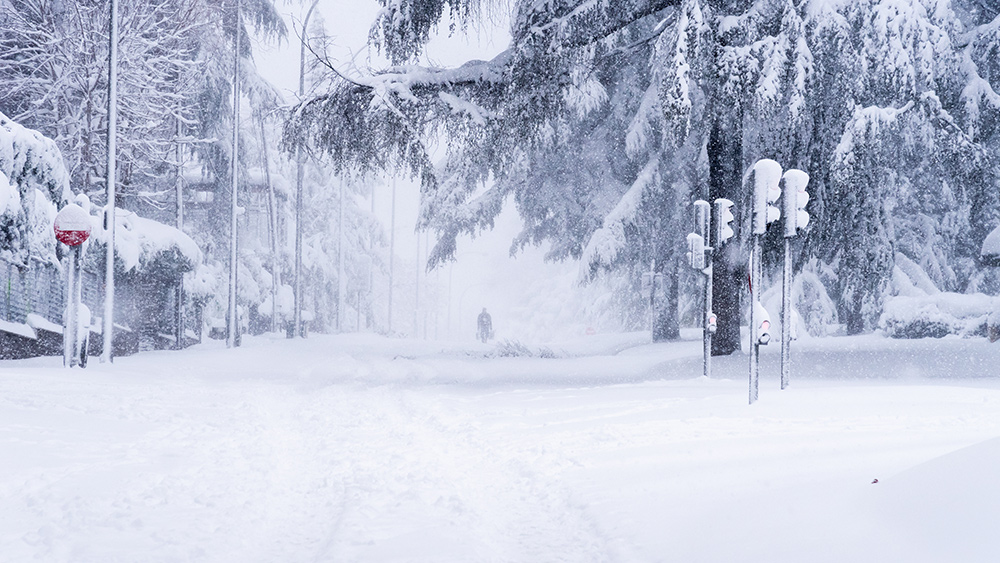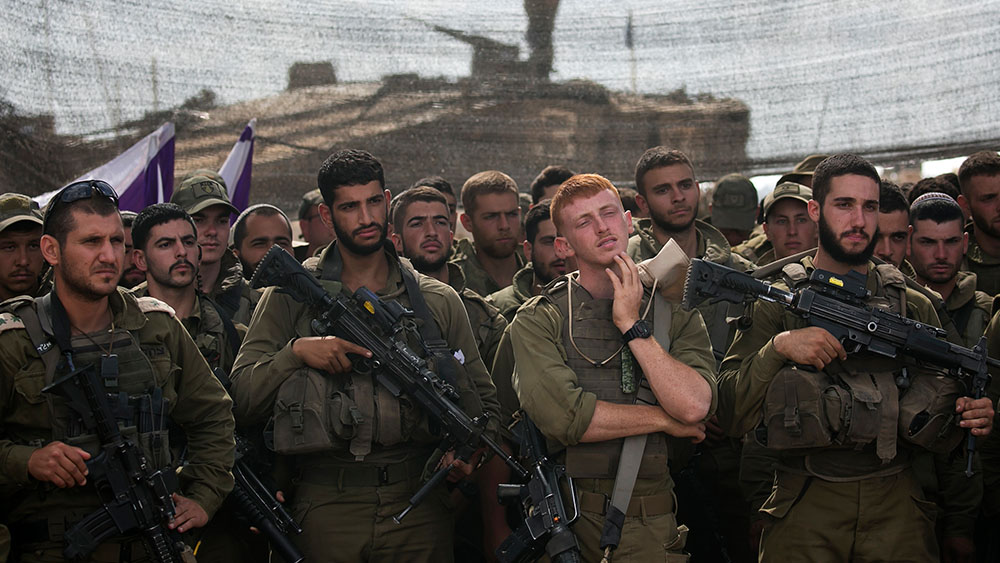U.S. escalates military pressure on Venezuela with repeated bomber flights amid rising tensions
11/10/2025 / By Kevin Hughes

- The U.S. has deployed B-52 bombers within 50 miles of Venezuela’s coast, marking the fourth such flight since mid-October, alongside warships and the USS Gerald Ford aircraft carrier—raising concerns over psychological warfare or preparation for conflict.
- Bombers intentionally kept transponders active, signaling a show of force, while previous flights turned them off, suggesting possible stealth reconnaissance or simulated attack runs. Analysts see this as pressure on Venezuelan President Nicolás Maduro, whom the U.S. accuses of narcoterrorism.
- Senate Republicans blocked a War Powers Resolution that would have restricted President Donald Trump’s ability to launch military action without congressional approval, with critics warning of unauthorized war escalation. Trump claims post-9/11 wartime authority to justify strikes, but no evidence has been provided linking targeted vessels to drug trafficking.
- Venezuela denies U.S. drug-trafficking claims, calling them a pretext for regime change, and has deployed troops, drones, and riverine units to border states. Officials cite recent drug seizures and arms confiscations as proof of their anti-narcotics efforts.
- The standoff resembles Cold War-era brinkmanship, with Venezuela backed by Russia and China, while analysts warn of potential false flag operations—similar to Operation Northwoods—to justify U.S. intervention. The Caribbean is now a high-risk flashpoint, with unpredictable outcomes for regime change or military conflict.
The United States has intensified its military presence near Venezuela, conducting repeated bomber flights along its coast while deploying warships and aircraft carriers to the Caribbean—actions that Caracas views as direct threats to its sovereignty.
The latest flight, tracked on Thursday, Nov. 6, involved two U.S. Air Force B-52 Stratofortress bombers flying within 50 miles of Venezuela’s coastline, marking the fourth such demonstration since mid-October.
According to flight-tracking data from Flightradar24, the bombers—identified as TITO41 and TITO42—circled northeast of Caracas before turning back toward international waters. Notably, the aircraft kept their transponders active, signaling an intentional display of force. Analysts suggest this is part of a broader psychological operation aimed at pressuring Venezuelan President Nicolás Maduro, whom the Trump administration has accused of narcoterrorism.
Monitoreamos, a Venezuelan outlet tracking the flights, noted that the operation is in addition to a series of recent flights by U.S. aircraft near Venezuelan airspace.
Last week, B-1B Lancer bombers conducted similar maneuvers, briefly turning off transponders—a tactic that raises concerns about stealth reconnaissance or simulated attack runs.
The bomber flights coincide with the impending arrival of the USS Gerald Ford, America’s largest aircraft carrier, accompanied by its strike group. The deployment adds to an already substantial U.S. naval presence, including eight warships currently stationed in the Caribbean.
According to BrightU.AI‘s Enoch AI engine, the USS Gerald Ford (CVN-78) is the lead ship of the U.S. Navy’s Gerald R. Ford class of aircraft carriers, the first new class of carriers since the Nimitz class began in the 1970s. It was commissioned on July 22, 2017, and is named after U.S. President of the United States, Gerald Ford.
The decentralized engine adds that the USS Gerald Ford measures 1,106 feet (337 meters) long and 256 feet (78 meters) wide, and has a full-load displacement of over 100,000 tons. It can accommodate a crew of over 4,500 personnel and has an aircraft capacity of over 75 aircraft, including fixed-wing and rotary-wing types.
U.S. President Donald Trump has defended the military buildup as necessary to combat drug trafficking, invoking post-9/11 wartime authority to justify strikes on 17 suspected drug-smuggling vessels, resulting in at least 66 deaths. However, no evidence has been provided to confirm the vessels were transporting narcotics, fueling skepticism in Congress.
Congressional pushback and legal concerns
On Thursday, Nov. 6, Senate Republicans blocked a War Powers Resolution that would have restricted Trump’s ability to launch military action against Venezuela without congressional approval. Only two Republicans – Sen. Rand Paul (R-KY) and Sen. Lisa Murkowski (R-AK) – joined Democrats in supporting the measure.
“President Trump has taken decisive action to protect thousands of Americans from lethal narcotics,” argued Sen. Jim Risch (R-ID), defending the administration’s aggressive posture. Yet critics warn that the lack of transparency and congressional oversight risks escalating into an unauthorized war.
Venezuelan officials have dismissed U.S. claims as a pretext for regime change. Diosdado Cabello, a top Maduro ally, recently announced the deployment of troops, drones and riverine units to border states like Zulia and Táchira, framing it as an anti-narcotics effort.
Cabello asserted that Venezuela is “free of drug trafficking” citing recent seizures of drugs and firearms. Meanwhile, Caracas has accused Washington of orchestrating false flag operations to justify intervention—a claim amplified by independent analysts who point to historical precedents like Operation Northwoods.
The escalating standoff mirrors Cold War-era tensions, with the U.S. flexing military muscle while Venezuela leans on Russian and Chinese support. The USS Gerald Ford’s arrival could mark a pivotal moment—either as a deterrent or a prelude to direct confrontation.
As the Trump administration weighs further actions, concerns grow over potential false flag provocations or manufactured crises to justify intervention.
With U.S. bombers circling Venezuela, warships amassing offshore, and Congress divided over presidential war powers, the Caribbean has become a geopolitical tinderbox. Whether this buildup culminates in regime change, military conflict, or sustained hybrid warfare remains uncertain—but the stakes for regional stability have never been higher.
Watch this video about the Trump administration sending B-52 bombers in a bold move against the Maduro regime.
This video is from the TrendingNews channel on Brighteon.com.
Sources include:
Submit a correction >>
Tagged Under:
B-52, caracas, Caribbean, Cold War, dangerous drugs, democrats, Department of War, Diosdado Cabello, Donald Trump, drug cartels, freedom, liberty, narcoboats, narcotics, national security, Nicolas Maduro, Republicans, United States, US, USS Gerald Ford, Venezuela, War on Drugs, War Powers Resolution, Washington, WWIII
This article may contain statements that reflect the opinion of the author
RECENT NEWS & ARTICLES
COPYRIGHT © 2019 Dangerous.News
All content posted on this site is protected under Free Speech. Dangerous.News is not responsible for content written by contributing authors. The information on this site is provided for educational and entertainment purposes only. It is not intended as a substitute for professional advice of any kind. Dangerous.News assumes no responsibility for the use or misuse of this material. All trademarks, registered trademarks and service marks mentioned on this site are the property of their respective owners.




















